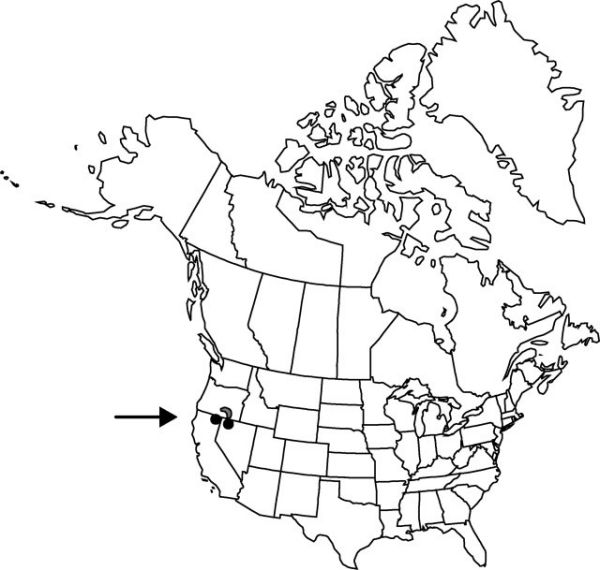Allium punctum
Rhodora 32: 23. 1930.
Bulbs 1–3, not clustered on stout primary rhizome, ovoid to subglobose, 1–2 × 0.9–1.7 cm; outer coats enclosing 1 or more bulbs, brown to yellow-brown or gray, membranous, ± prominently cellular-reticulate, cells in ± regular vertical rows, narrowly rectangular, transversely elongate, without fibers; inner coats white, cells obscure, narrowly rectangular, transversely elongate, or quadrate. Leaves usually deciduous with scape, green or withering only at tip at anthesis, 2, basally sheathing, sheaths not extending much above soil surface; blade solid, flat, falcate, 9–18 cm × 2–3 mm, margins entire. Scape usually forming abcission layer and deciduous with leaves after seeds mature, frequently breaking at this level after pressing, solitary, erect, solid, ± flattened, not winged, 3–10 cm × 1–2 mm. Umbel persistent, erect, ± compact, 6–20-flowered, hemispheric, bulbils unknown; spathe bracts persistent, 2, 6–9-veined, lanceolate to ovate, ± equal, apex acute to abruptly acuminate. Flowers narrowly campanulate, 6–13 mm; tepals erect, white to pinkish with narrow to very broad, purple midvein, oblong-lanceolate, ± equal, becoming papery, investing capsule in fruit, margins entire, apex obtuse; stamens included; anthers light yellow; pollen yellow; ovary crested; processes 3, central, low, rounded, broad, margins entire; style linear, equaling stamens; stigma capitate, scarcely thickened, unlobed; pedicel 5–11 mm. Seed coat dull; cells smooth. 2n = 14.
Phenology: Flowering May–Jun.
Habitat: Sandy, rocky, or clay soils on open slopes and flats
Elevation: 1300–1600 m
Distribution

Calif., Nev., Oreg.
Discussion
Selected References
None.
